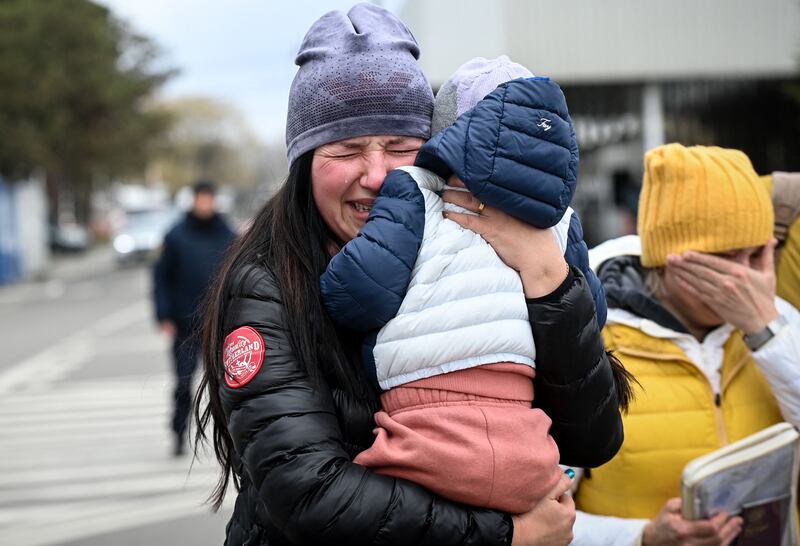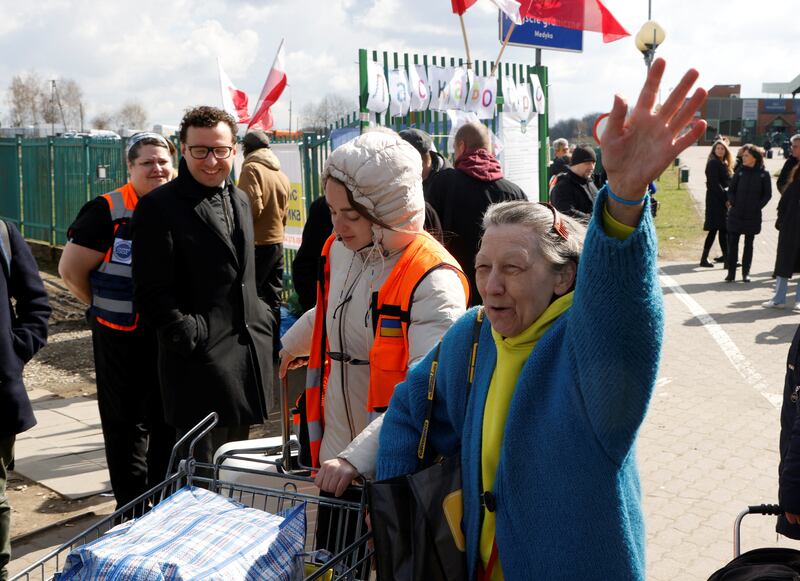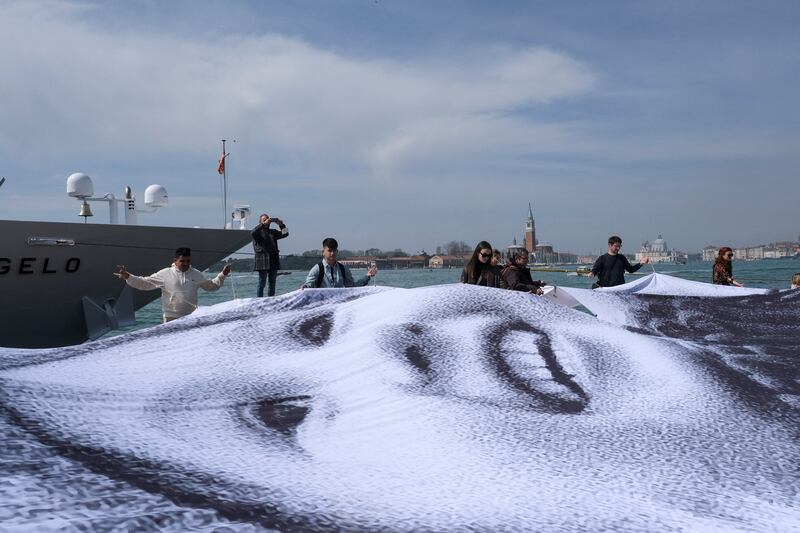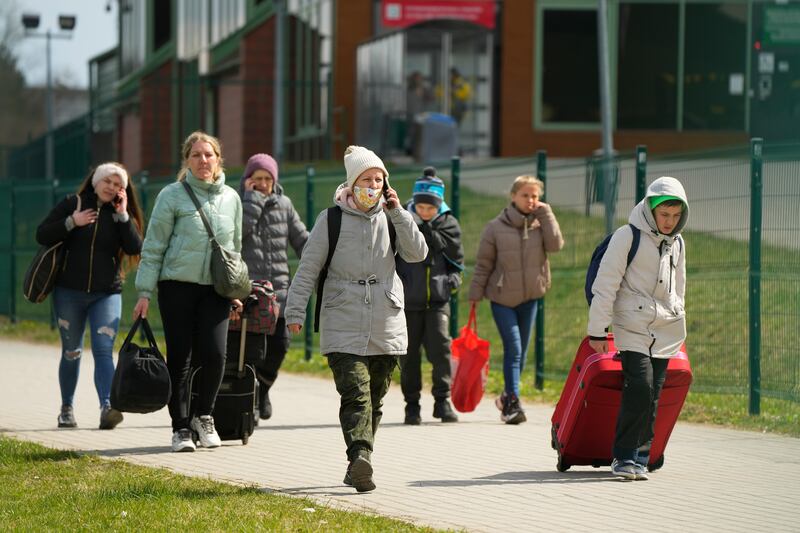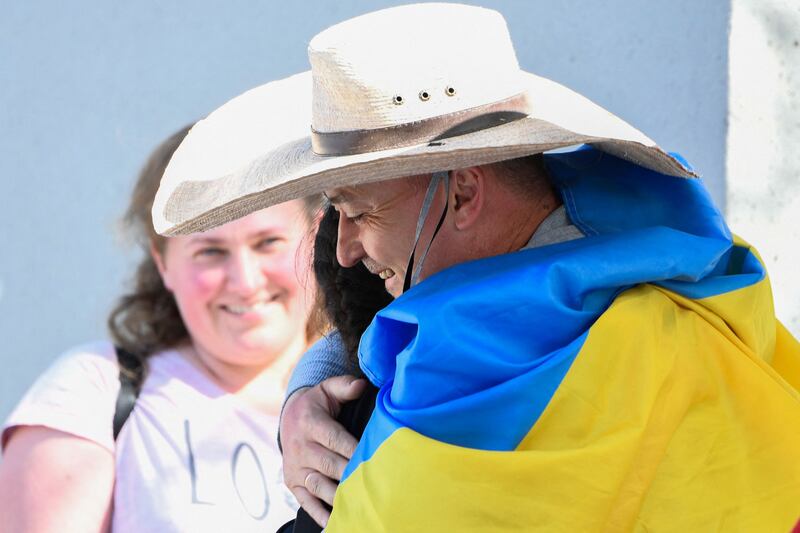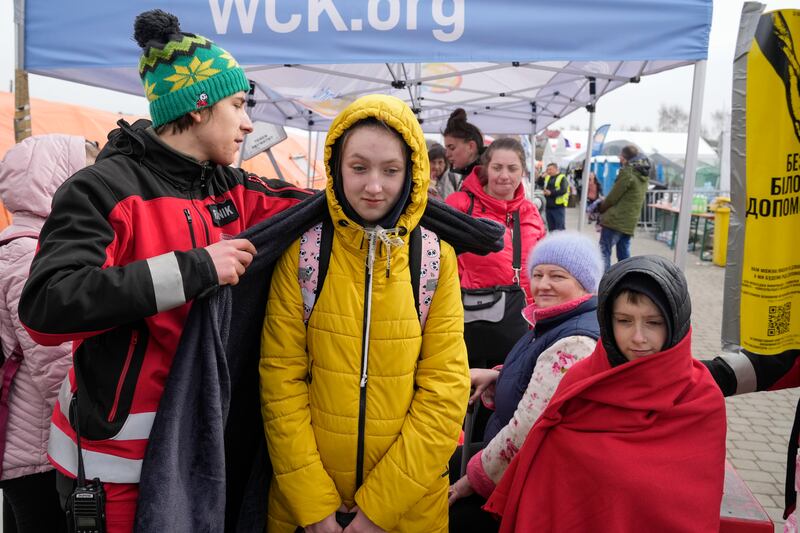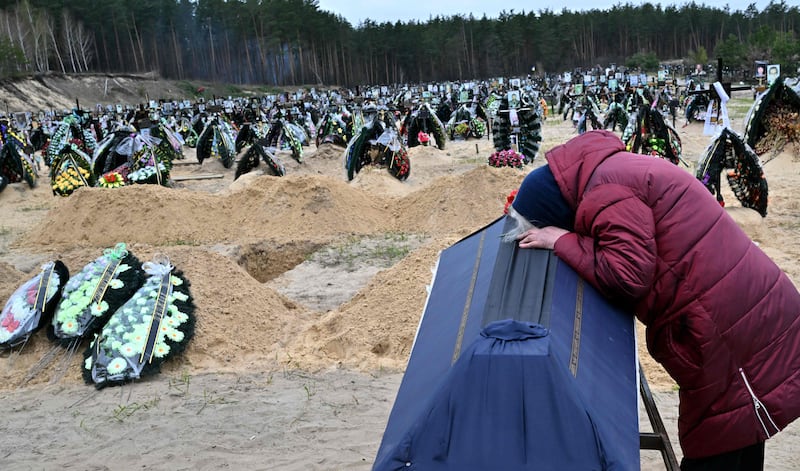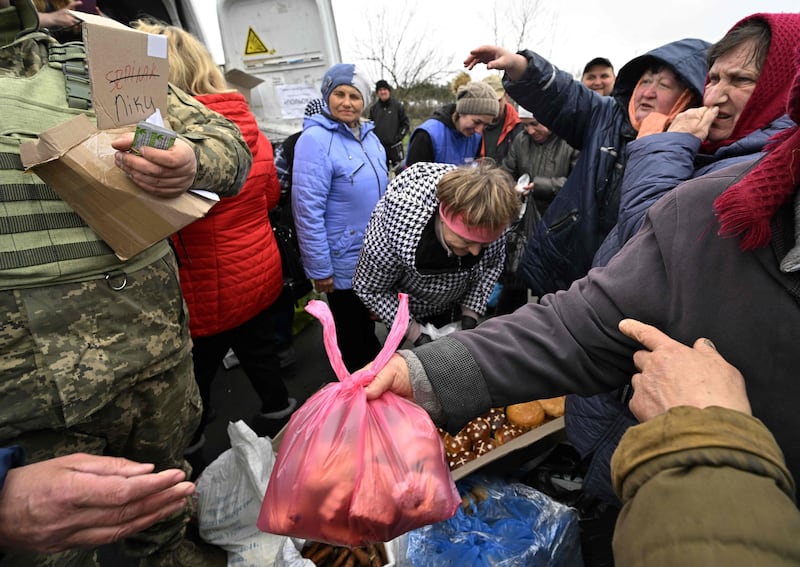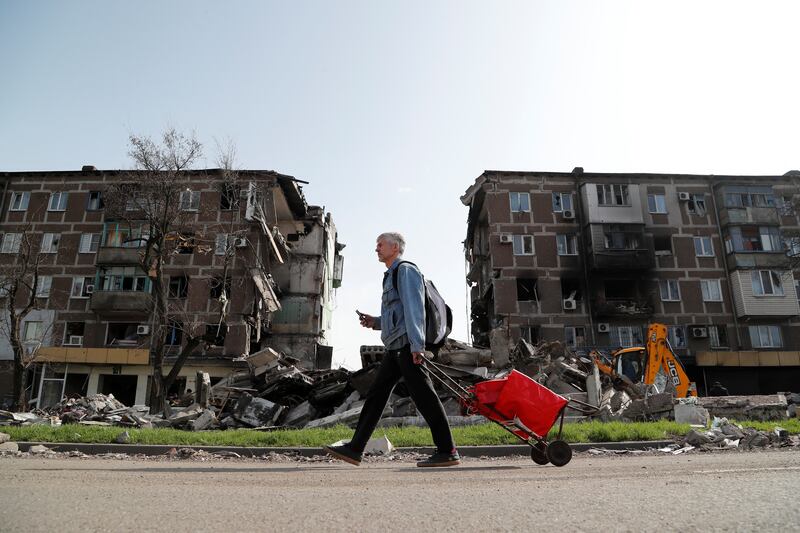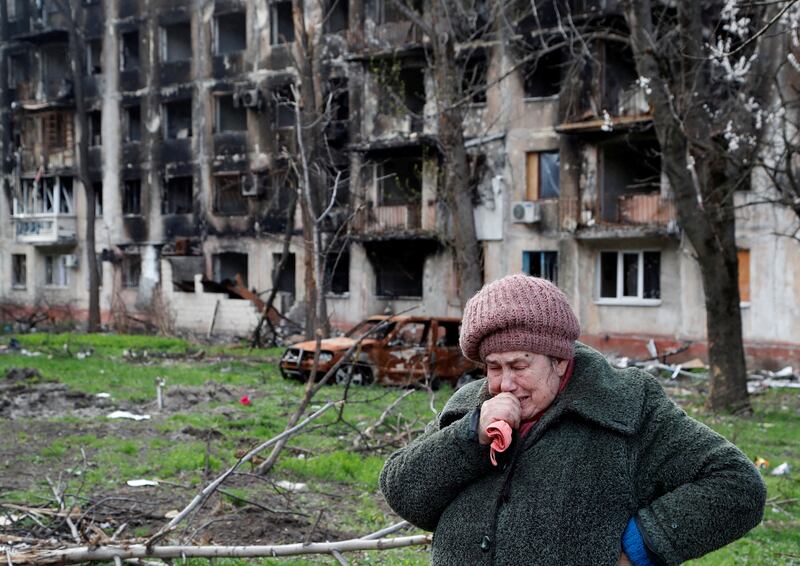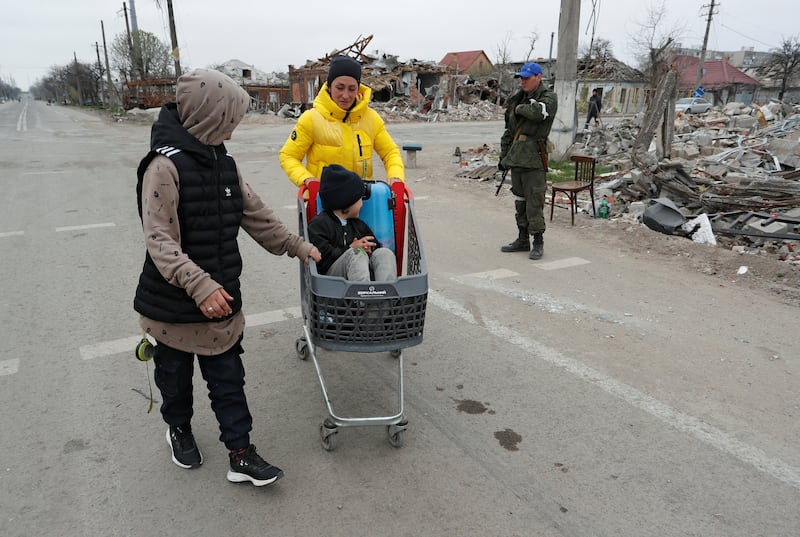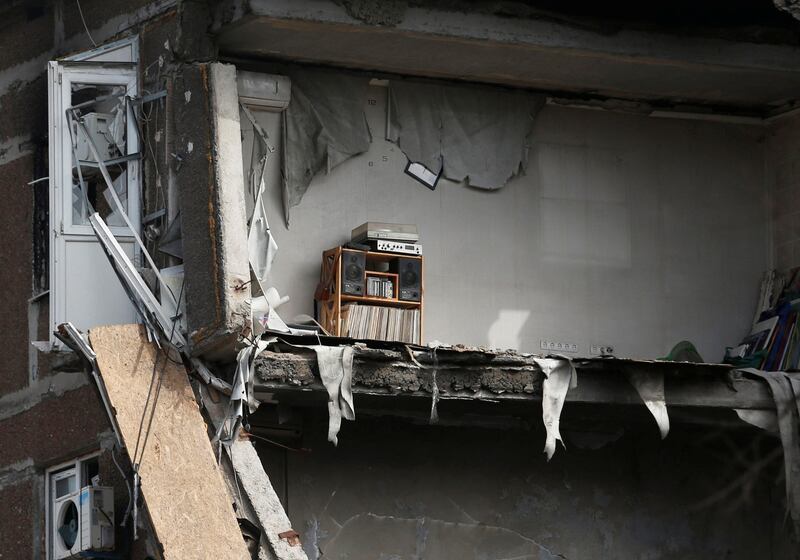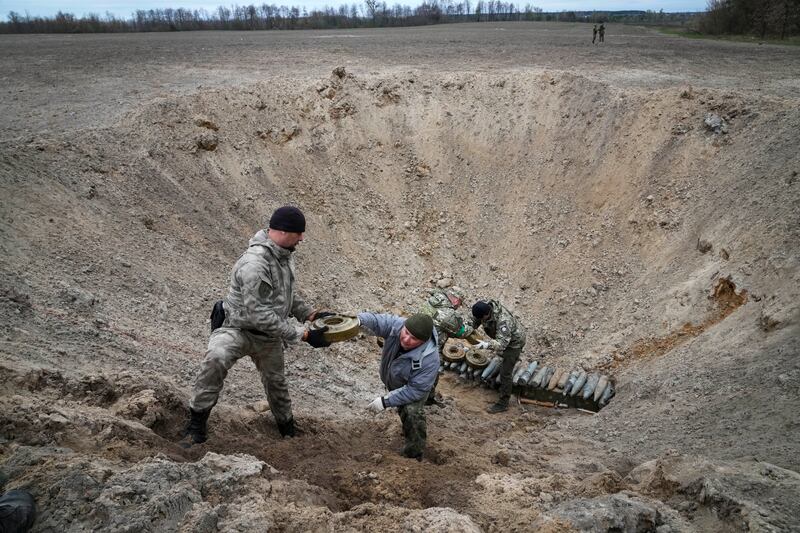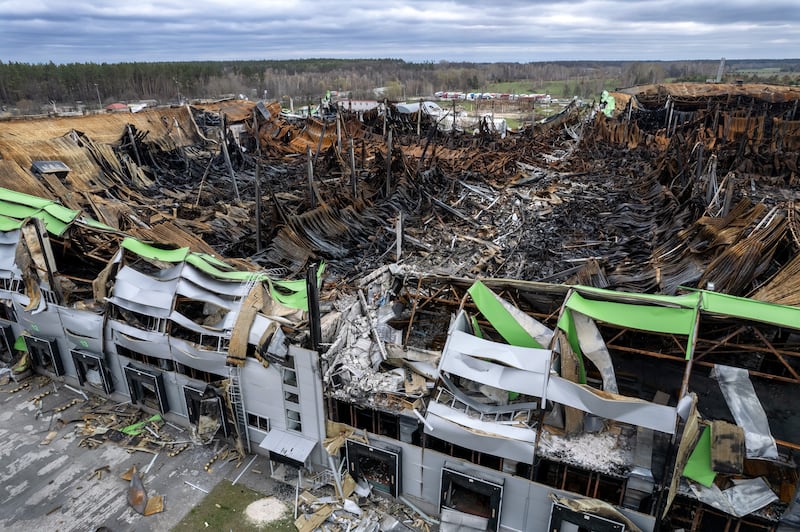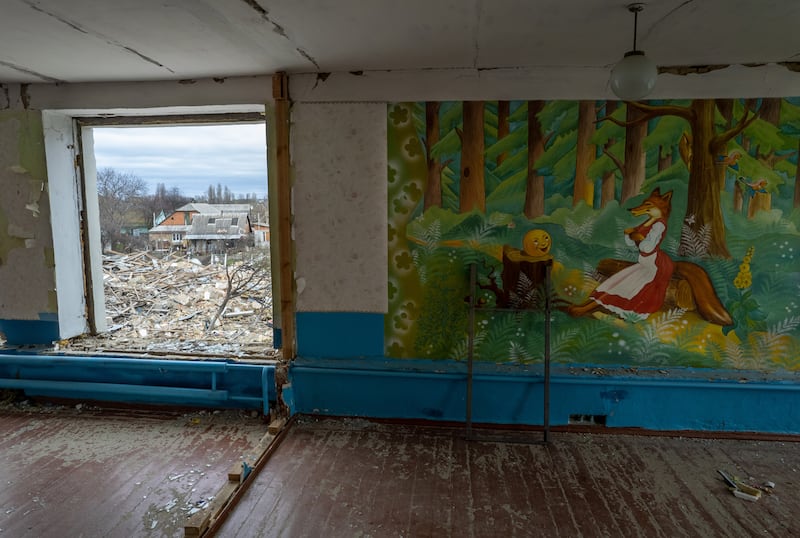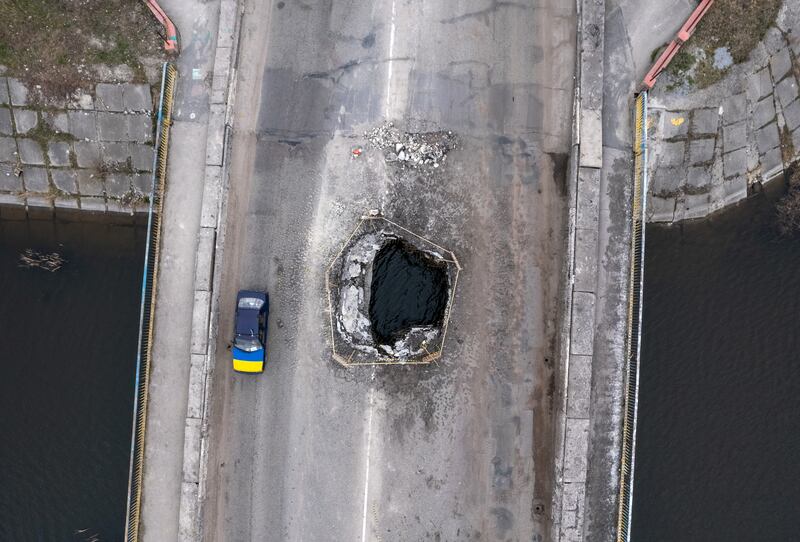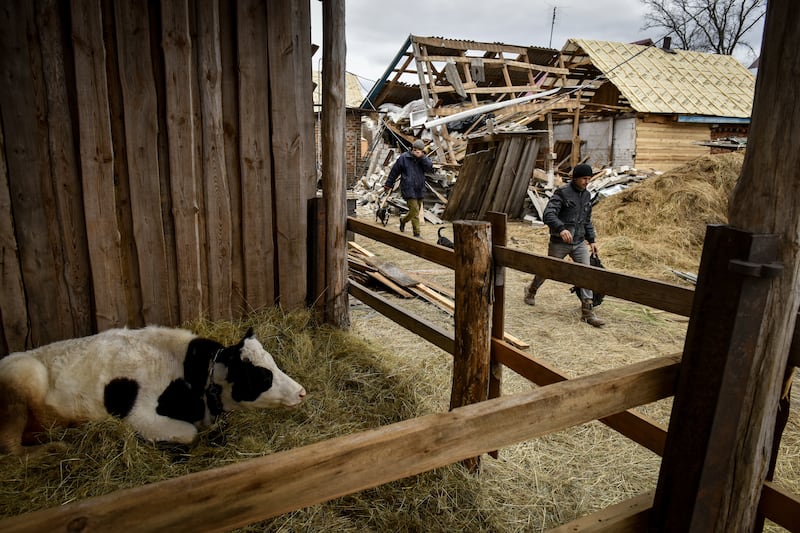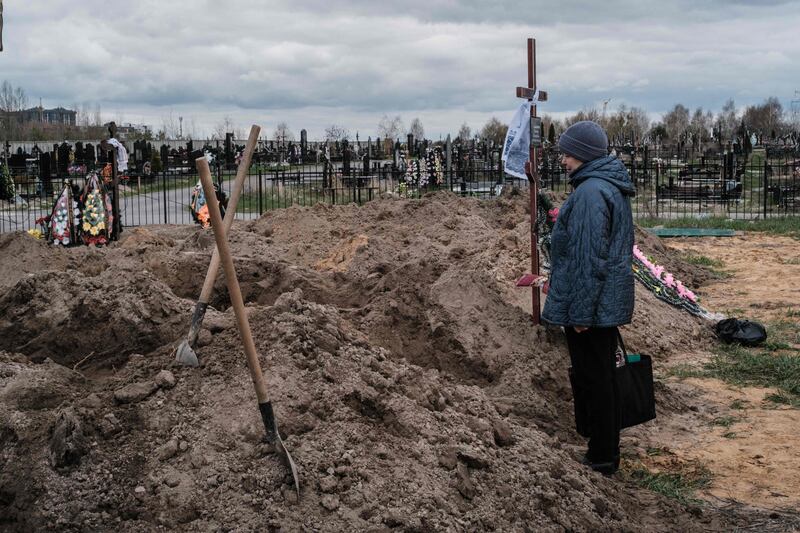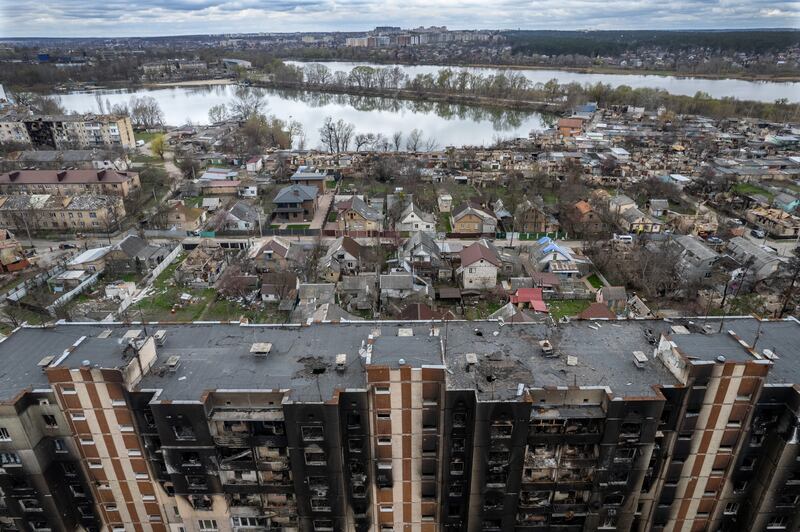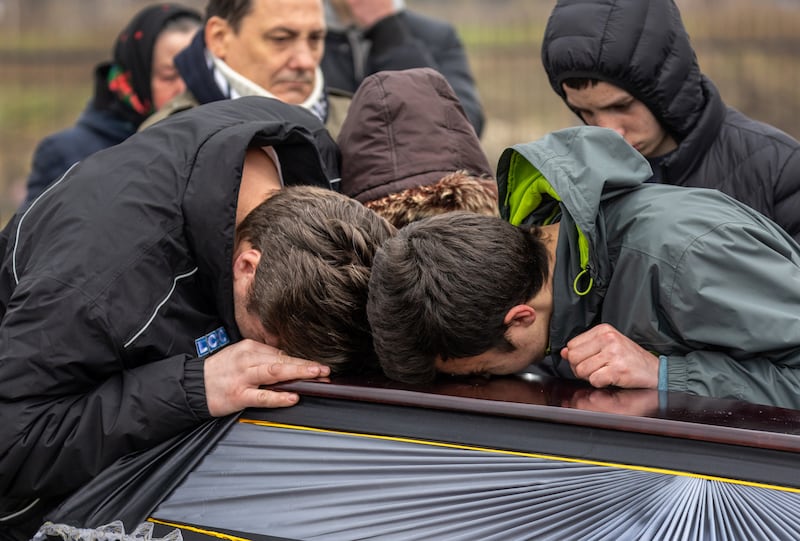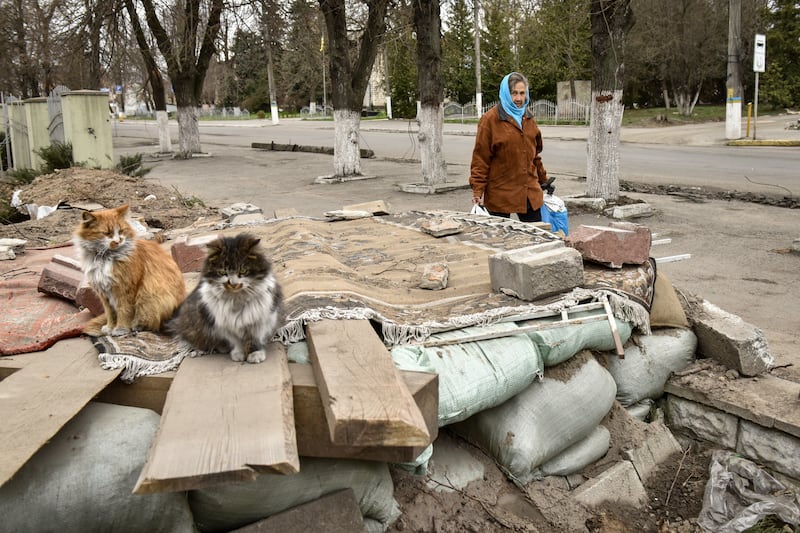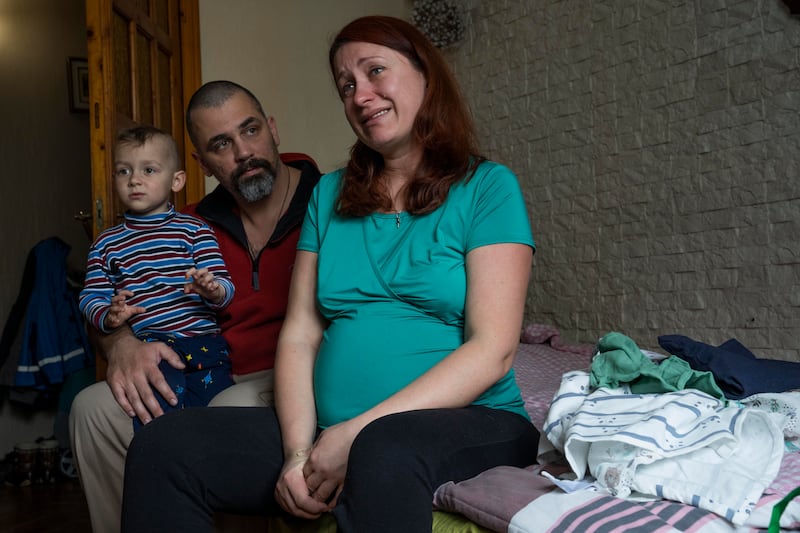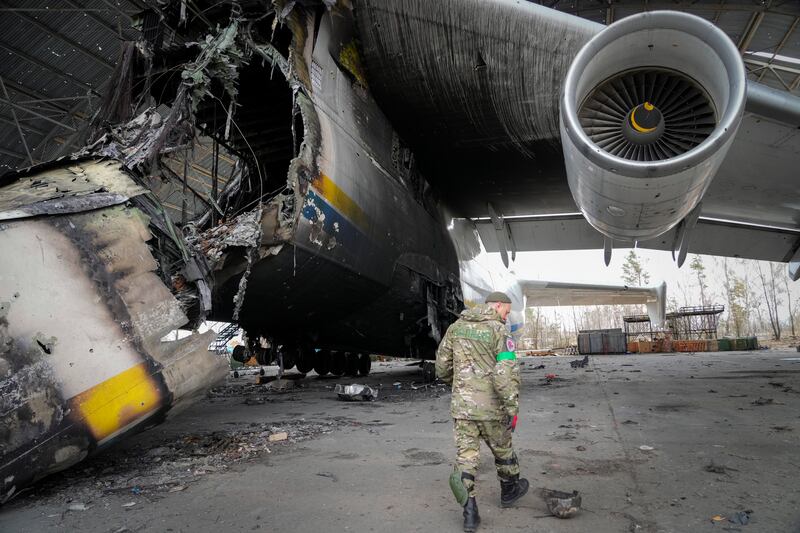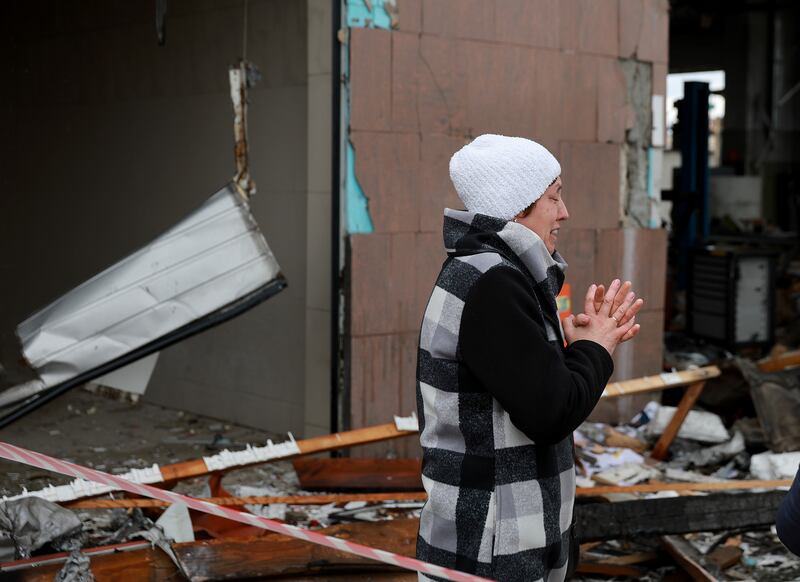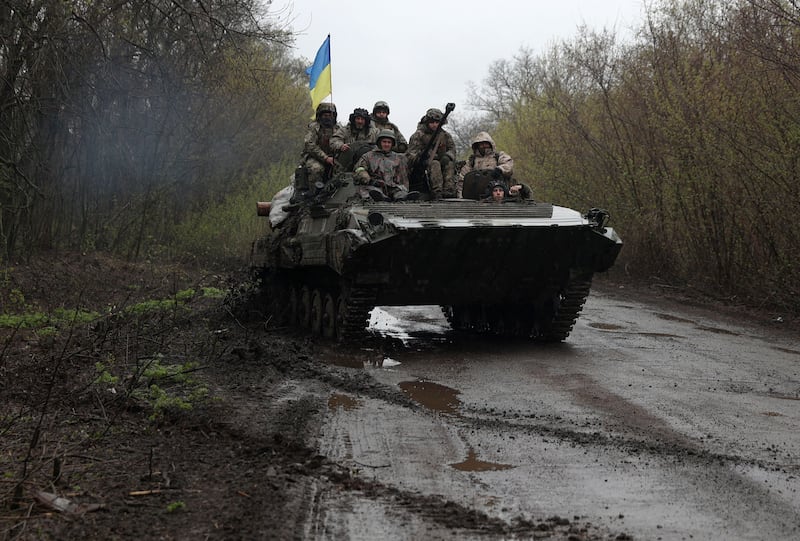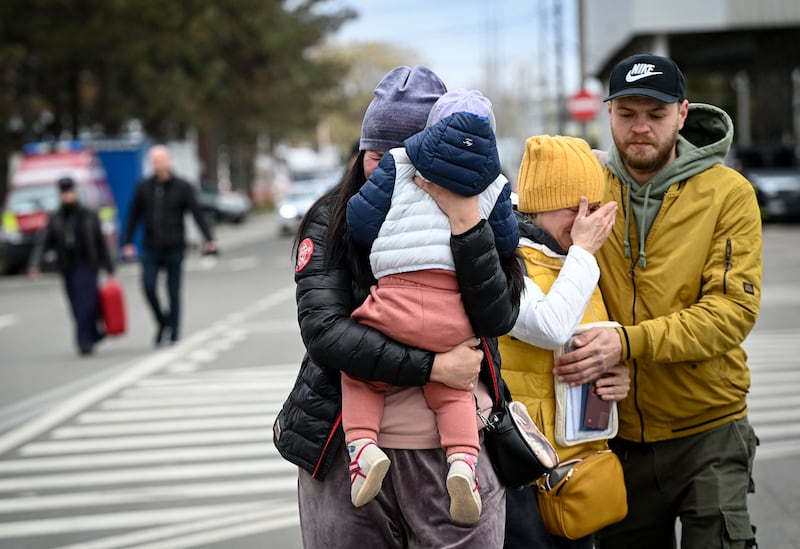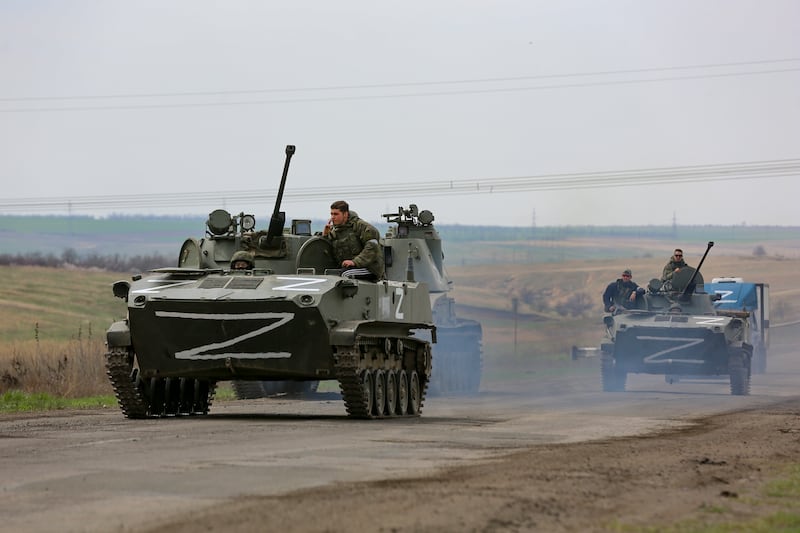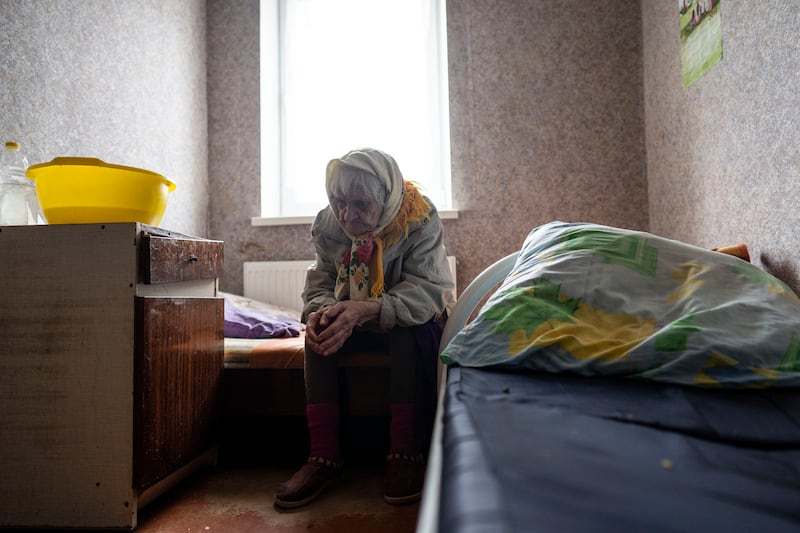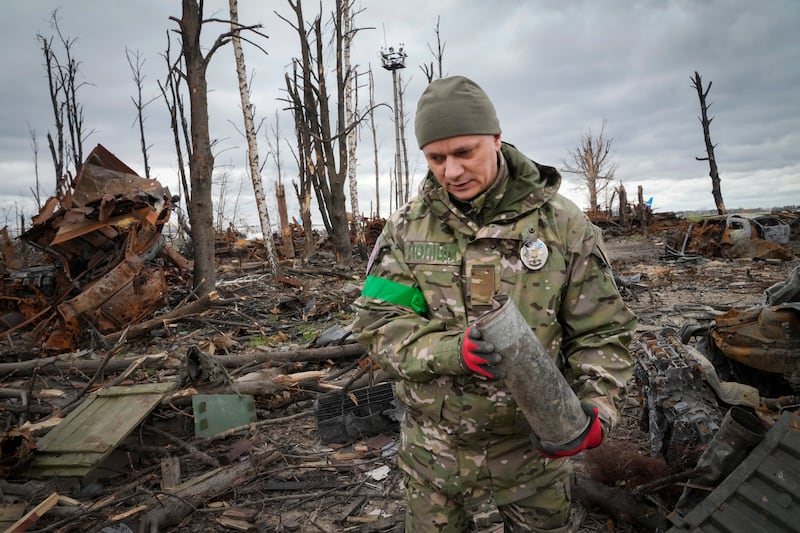Live updates: follow the latest news on Russia-Ukraine
The number of Ukrainian refugees who have fled the Russian assault hit the five million mark as the war enters its ninth week, UN data indicated on Wednesday.
Since President Vladimir Putin ordered a full-scale invasion of Ukraine on February 24, Eastern Europe has been hit by one of the biggest refugee crises in modern times and the fastest growing exodus since the Second World War.
The UN refugee agency said on Wednesday that the number of Ukrainians to have fled abroad had reached 5,034,439.
Poland has absorbed the brunt of the rush, offering sanctuary to 2,825,463 refugees, followed by Romania, which has taken in 757,047, the figures show.
Hungary has accepted 471,080 while 426,960 Ukrainians have fled to Moldova.
There are 342,813 Ukrainians who have sought sanctuary in Slovakia and 23,759 have gone to Belarus.
Filippo Grandi, UN High Commissioner for Refugees, said many Ukrainians who had fled the war had risked their lives to return home to see their loved ones.
"Five million people have now fled Ukraine," he tweeted. "They have left behind their homes and families.
"Many would do anything, and some even risk going back, to see their loved ones. But every new attack shatters their hopes. Only an end to the war can pave the way for rebuilding their lives."
More than half a million Ukrainians have arrived in Russia since the full-scale military advance into Ukraine was launched.
Some Ukrainians claim they were sent to Russia against their will with the country's human rights ombudswoman estimating 33,000 were forcibly deported from the besieged areas of Mariupol alone. Last month Russia listed the whereabouts of 95,909 people across Russia who had left Ukraine.
The majority of those who have left Ukraine are women, children and elderly people. Men aged between 18 and 60 are eligible for military call-up and have been banned from leaving Ukraine.
Since February 24 more than a million Ukrainians had returned to their homeland, a spokesman for Kyiv’s border force said on Wednesday.
"From that period of time, 1.1 million of our citizens entered Ukraine," border official Andriy Demchenko said at a press conference.
He did not specify how many of those returning had earlier left the country in connection with the war.
He also said more than 2,000 people were arrested for attempting to cross the border illegally.
About 7.1 million Ukrainians are internally displaced, the World Health Organisation said on Monday.
Shabia Mantoo, spokeswoman for the UN Refugee Agency, said the “staggering” numbers of Ukrainians who have been forced to either flee abroad or relocate within the country zone represented lives and livelihoods being torn apart.
“The number of refugees that are fleeing across the borders continues to increase on a daily basis,” she said. “So in less than two months, about eight weeks, we’ve seen a quarter of Ukraine’s population, more than 12 million people in total, including five million refugees but also about 7.5 million people inside the country that have been forced to flee their homes.
“So this is a staggering amount of people who had to leave their homes, their possessions, in some cases family members behind. Millions of lives have been shattered and their lives torn apart by this war.”
The UN's International Organisation for Migration (IOM) said an additional 218,000 third-country nationals - largely students and migrant workers - have also escaped to neighbouring countries.
"Eight weeks into the conflict, we are at five million and counting, with five million unique stories of loss and trauma," said deputy UNHCR chief Kelly T Clements.
"The sheer scale and speed of displacement is immense," she told the UN Security Council from Hungary on Tuesday.
"Each one of the millions of displaced are forced to make impossible, heart-breaking decisions and have left everything, almost everything, they hold dear."
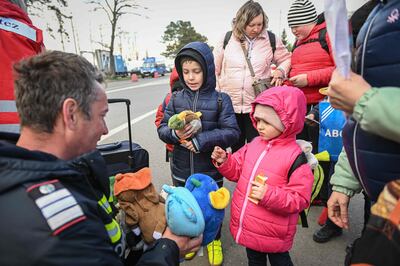
Just three weeks ago, when the number reached four million, the UN High Commissioner for Refugees was saying it had exceeded the worst-case predictions.
The refugee exodus reached the grim milestone of five million as the battle for the Donbas region got under way.
Mr Putin has launched a renewed offensive on the eastern flank of Ukraine after failing in his bid to capture the capital Kyiv.
Reports have suggested an increase in military activity in the Luhansk and Donetsk areas in the Donbas region.
Ukrainian President Volodymyr Zelenskyy announced the battle had begun in his overnight address to the nation.
“Now, we can already state that the Russian troops have begun the battle for the Donbas, for which they have been preparing for a long time,” he told Ukraine.
Mr Zelenskyy said a “significant part of the entire Russian army is now concentrated on this offensive”.
“No matter how many Russian troops are driven there, we will fight,” Mr Zelenskyy said. “We will defend ourselves. We will do it every day.”
The Donbas is Ukraine’s mostly Russian-speaking industrial heartland in the east, where Moscow-backed separatists have been fighting Ukrainian forces since 2014.
In the days before Mr Putin launched the attack on Ukraine, Moscow formally recognised the breakaway "people's republics" of Luhansk and Donetsk and ordered tanks into those regions.
In recent weeks, the Kremlin said the capture of the Donbas is its main goal in the war.
Mr Putin’s failure to take Kyiv is regarded by some experts as a humiliating blow to his war effort.
Brandon Lewis, Britain’s Northern Ireland Secretary, on Tuesday said more weapons would be sent from the UK to help Ukrainians fighting in the Donbas.
“We’re seeing a further push, it seems, from Putin’s regime, so we will continue to do all we can to support Ukraine,” Mr Lewis told BBC Breakfast. “As the Prime Minister [Boris Johnson] said when he was in Kyiv with the [Ukrainian] president just a week or so ago, we will be sending out further defensive arms.”
